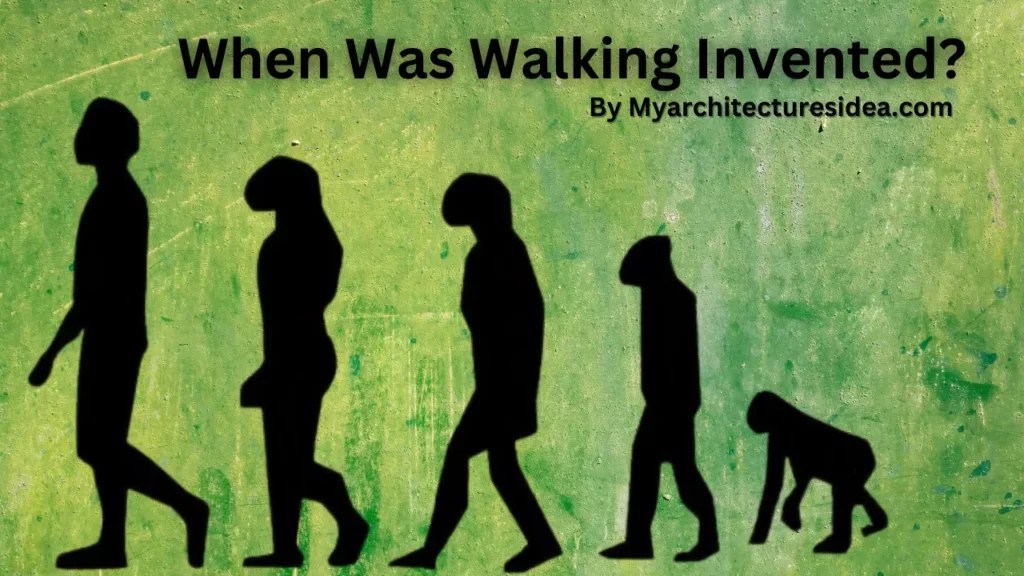Walking, a fundamental aspect of human mobility, has a rich history that stretches back millions of years. Understanding when walking was invented requires delving into the evolutionary journey of our ancestors. This article explores the origins of walking, the evolutionary adaptations that enabled bipedalism, and the significance of walking in human development.
From the earliest hominins to modern humans, walking has been a key factor in survival and social interaction. This article will not only address the question of when walking was invented but also investigate the biological and cultural implications of this fundamental activity. By examining scientific research and historical evidence, we aim to provide a comprehensive understanding of walking as an essential part of the human experience.
Join us as we uncover the timeline of bipedalism, explore its evolutionary advantages, and highlight how walking has shaped human societies throughout history.
Table of Contents
- 1. The Evolution of Bipedalism
- 2. Key Milestones in Walking Development
- 3. The Biological Mechanisms of Walking
- 4. Walking in Early Hominins
- 5. Cultural Significance of Walking
- 6. Modern Implications of Walking
- 7. Health Benefits of Walking
- 8. Conclusion and Future Perspectives
1. The Evolution of Bipedalism
Bipedalism, or the ability to walk on two legs, distinguishes humans from most other primates. The transition to bipedal walking was a significant evolutionary milestone for our ancestors. This section examines the timeline and factors leading to the development of bipedalism.
1.1 Early Hominins
The earliest bipedal hominins date back to around 6 to 7 million years ago. Fossils of Sahelanthropus tchadensis, one of the oldest known hominins, suggest that these early ancestors had adaptations for both bipedalism and climbing.
1.2 Factors Driving Bipedalism
Several theories explain why early hominins evolved to walk upright:
- Environmental Changes: As forests receded and savannas expanded, walking on two legs provided better visibility and the ability to travel longer distances.
- Thermoregulation: Bipedalism reduced the body’s exposure to the sun, aiding in temperature regulation.
- Tool Use: Walking on two legs freed the hands for tool-making and carrying objects.
2. Key Milestones in Walking Development
The development of walking did not occur overnight. It was a gradual process that involved several key milestones. This section highlights important stages in the evolution of walking.
2.1 Australopithecus
Australopithecus, which lived around 4 million years ago, exhibited clear adaptations for bipedalism. Fossils such as “Lucy” (Australopithecus afarensis) demonstrate a combination of traits for walking and climbing.
2.2 Homo Erectus
Homo erectus, appearing about 1.9 million years ago, showed further advancements in bipedalism. Their skeletal structure was more modern, allowing for efficient long-distance walking.
3. The Biological Mechanisms of Walking
Walking is a complex biomechanical process involving multiple systems within the body. This section delves into the biology behind walking.
3.1 Musculoskeletal System
The musculoskeletal system, including bones, muscles, and joints, plays a crucial role in walking. Key components include:
- Pelvis: The shape of the pelvis supports upright walking.
- Leg Muscles: The quadriceps and hamstrings are essential for movement.
- Feet: The structure of the foot absorbs shock and provides stability.
3.2 Neurological Control
Walking is coordinated by the nervous system, which sends signals from the brain to the muscles. This intricate communication allows for balance and movement.
4. Walking in Early Hominins
Walking played a vital role in the lives of early hominins. This section explores how walking influenced their daily activities and survival strategies.
4.1 Foraging and Hunting
Walking allowed early humans to cover vast distances in search of food. This adaptability facilitated foraging and hunting, which were essential for survival.
4.2 Social Interactions
Bipedalism also enhanced social interactions among early hominins. Walking allowed for the development of social structures and communication.
5. Cultural Significance of Walking
As humans evolved, walking took on cultural significance. This section examines the impact of walking on human culture.
5.1 Walking in Art and Literature
Throughout history, walking has been depicted in art and literature as a symbol of exploration and journey. Famous works often highlight the importance of walking in human experience.
5.2 Rituals and Traditions
Many cultures incorporate walking into rituals and traditions, emphasizing its importance in community bonding and spiritual practices.
6. Modern Implications of Walking
Today, walking remains a vital part of human life. This section discusses the modern implications of walking in various contexts.
6.1 Urban Design and Walkability
As cities evolve, the concept of walkability has gained importance. Urban planners are increasingly focusing on creating pedestrian-friendly environments.
6.2 Walking as a Form of Exercise
Walking is widely recognized for its health benefits. Regular walking promotes physical fitness and mental well-being.
7. Health Benefits of Walking
The health benefits of walking cannot be overstated. This section outlines some of the key advantages of incorporating walking into daily life.
7.1 Physical Health
Walking helps improve cardiovascular health, strengthens muscles, and aids in weight management. Regular walking can also reduce the risk of chronic diseases.
7.2 Mental Health
Walking has been shown to reduce stress, anxiety, and depression. Engaging in regular walks can enhance mood and overall mental wellness.
8. Conclusion and Future Perspectives
In conclusion, walking is a fundamental aspect of human evolution that has shaped our biology and culture. Understanding when walking was invented provides insight into our past and its significance in today's world. As we look to the future, promoting walking as a healthy and sustainable mode of transportation will be essential for improving public health and urban living.
We encourage readers to reflect on their own walking habits and consider incorporating more walking into their daily routines. Share your thoughts in the comments below, and feel free to explore more articles on our site that discuss health, wellness, and human evolution.
Thank you for reading! We hope to see you back here for more insightful discussions on topics that matter to you.



